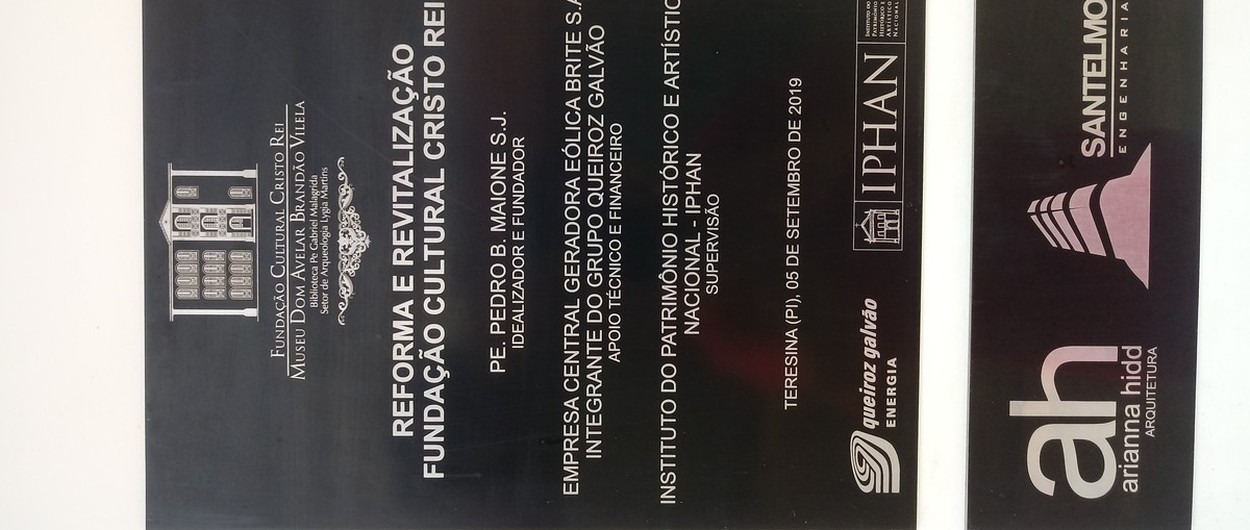There are 3 museums in the city of Teresina, Brazil. Below you will find some general information about each of them. Click the details link to get more data about open hours, accessibility, exhibitions, and more.
Casa da Cultura de Teresina

| Name: | Casa da Cultura de Teresina |
|---|---|
| Category: | Museum |
| State: | Piaui |
| City: | Teresina |
| Address: | Casa da Cultura de Teresina - R. Rui Barbosa, 348 - Centro (Sul), Teresina - PI, 64001-090, Brazil (View on Google Maps) |
The Casa da Cultura de Teresina, located in Teresina, Piauí, is a cultural space housed in a historic building constructed between 1870 and 1880. Initially serving as a residence, the site has a rich history, having also functioned as a military quarter and a seminary. Visitors can explore this cultural hub, which features collections focused on local history, arts, and traditions. The museum offers guided tours lasting approximately 45 minutes to an hour, allowing guests to gain insights into the region’s heritage. Access to the museum is usually straightforward, providing a welcoming environment for both locals and tourists.
Currently, the museum hosts various exhibitions and cultural activities, including dance classes and performances by local troupes. Specific items from its collection highlight the area’s historical significance and showcase artistic contributions by local artists. The museum staff is noted for their informative presentations about the exhibits, creating a meaningful experience for visitors wanting to understand Teresina’s cultural landscape.
Museu Dom Avelar Brandão Vilela

| Name: | Museu Dom Avelar Brandão Vilela |
|---|---|
| Category: | Museum |
| State: | Piaui |
| City: | Teresina |
| Address: | Museu Dom Avelar Brandão Vilela - Rua Poeta Domingos Fonseca - Cristo Rei, Teresina - PI, 64014-315, Brazil (View on Google Maps) |
The Museu Dom Avelar Brandão Vilela is located in Teresina, Piauí, Brazil. It is a cultural institution that houses a diverse collection of historical artifacts, including an impressive array of coins and paleontological items. The museum is accessible to visitors, opening from 9 AM to 5 PM on weekdays and 9 AM to 12 PM on Saturdays. The entrance fee is reasonably priced, with discounts for students and teachers. Tours typically take around an hour, allowing guests to explore the various exhibits.
Visitors to the museum can expect to see a fascinating collection of ancient coins that tell stories from different cultures and eras. There are also archaeological pieces and items related to the travels of Padre Pedro, showcasing artifacts from his missions around the world. The well-organized exhibits provide an informative experience for anyone interested in history or culture, making it a notable stop in Teresina.
Museu de Arqueologia e Paleontologia

| Name: | Museu de Arqueologia e Paleontologia |
|---|---|
| Category: | Museum |
| State: | Piaui |
| City: | Teresina |
| Address: | Museu de Arqueologia e Paleontologia - Ininga, Teresina - PI, Brazil (View on Google Maps) |
The Museu de Arqueologia e Paleontologia, located within the Campus of the Universidade Federal do Piauí (UFPI), is dedicated to the preservation and display of archaeological and paleontological artifacts. Established in 2013, the museum houses an impressive collection of approximately 30,000 items, including around 3,000 fossils from various regions of Piauí. Visitors can explore around 40 archaeological pieces on exhibit, with a tour length that typically allows for a thorough exploration of the displays. The museum is accessible free of charge, open in the mornings until noon and then reopening from 2 PM to 5 PM.
Among its notable offerings, the museum features a range of archaeological artifacts such as ceramics and lithic tools, as well as a human skeleton. Though most of the larger collection is stored in technical reserves that are not open to the public, the displayed items provide a valuable glimpse into the area’s rich cultural and historical heritage. The museum emphasizes research and education, making it an important resource for both scholars and the general public interested in learning more about the region’s ancient civilizations.

